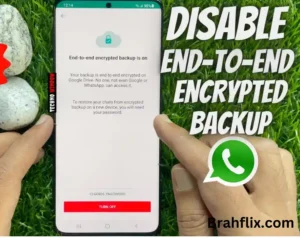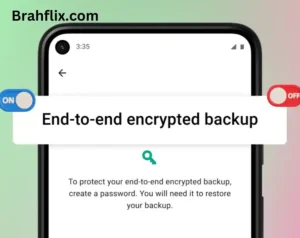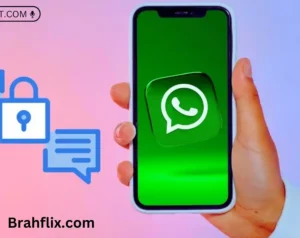Introduction
WhatsApp is renowned for its robust end-to-end encryption, which ensures that only you and your intended recipient can read your messages. This encryption is a critical feature for protecting privacy and securing communications. However, there may be scenarios where users want to understand the process or implications of disabling this encryption, whether for troubleshooting, business purposes, or other reasons.
In this comprehensive guide, we will explore how to disable end-to-end encryption in WhatsApp, discuss the potential consequences, and provide insights into the security implications.
Key Takeaways:
- Understand the role of end-to-end encryption in WhatsApp.
- Learn whether it’s possible to disable encryption and the steps involved.
- Explore the consequences of disabling encryption and alternative methods for managing privacy.
Understanding End-to-End Encryption in WhatsApp
To grasp why you might want to disable encryption, it’s crucial to understand what end-to-end encryption entails.
What is End-to-End Encryption?
End-to-end encryption (E2EE) is a method of data transmission where only the communicating users can read the messages. It ensures that messages are encrypted on the sender’s device and only decrypted on the recipient’s device.
Key Components:
- Encryption Algorithms: Messages are scrambled using complex algorithms that only authorized devices can unscramble.
- Encryption Keys: Unique keys are used to encrypt and decrypt messages. These keys are stored only on the user’s devices.
Why Is Encryption Important?
- Privacy: It ensures that conversations are private and cannot be accessed by third parties, including WhatsApp itself.
- Security: Prevents unauthorized access, making it difficult for hackers to intercept and read messages.
- Compliance: Many regions have strict privacy regulations that require end-to-end encryption.
The Possibility of Disabling End-to-End Encryption
One of the most common queries is whether it’s possible to disable end-to-end encryption on WhatsApp.
Can You Disable Encryption?
Direct Disabling: Currently, WhatsApp does not offer a built-in option to disable end-to-end encryption. The service is designed to always use encryption to protect user communications.
Why Is It Not Possible?
- Security Protocols: The core design of WhatsApp’s security architecture revolves around encryption. Disabling it would undermine the security model.
- Privacy Policies: Disabling encryption would conflict with privacy policies and legal regulations that mandate the protection of user data.
Alternative Approaches
- Using Alternate Platforms: If you require different levels of security or features, consider using other messaging platforms with different security settings.
- Temporary Security Adjustments: For business purposes, there are tools and protocols to manage communications securely within the encrypted framework.
Managing Privacy Without Disabling Encryption
While you cannot disable encryption, there are ways to manage and enhance your privacy and security settings on WhatsApp.
Adjusting Privacy Settings
- Read Receipts: You can turn off read receipts to prevent others from knowing when you have read their messages. Go to Settings > Privacy > Read Receipts.
- Last Seen: Control who can see your Last Seen status by going to Settings > Privacy > Last Seen.
Using Two-Step Verification
Two-step verification adds an extra layer of security by requiring a PIN code in addition to the standard verification process. To enable it:
- Go to Settings > Account > Two-Step Verification.
- Follow the prompts to set up a PIN and provide an email address for recovery.
Managing Group Privacy
- Group Settings: Control who can add you to groups by going to Settings > Privacy > Groups.
- Notifications: Manage group notifications to reduce distractions and ensure that only relevant messages alert you.
Consequences of Disabling Encryption
If it were possible to disable encryption, several significant consequences would arise.
Security Risks
- Increased Vulnerability: Without encryption, messages could be intercepted and read by unauthorized parties, including hackers and cybercriminals.
- Data Breaches: Sensitive information could be exposed, leading to potential data breaches and identity theft.
Legal and Compliance Issues
- Privacy Regulations: Disabling encryption would violate privacy laws and regulations in many jurisdictions, leading to legal repercussions.
- User Trust: The lack of encryption would erode user trust in WhatsApp’s ability to protect their data.
What to Do If You Have Concerns About Security
If you have concerns about the security of your messages, there are alternative measures you can take.
Use Encrypted Communication Tools
- Signal: An alternative messaging app known for its strong security and privacy features.
- Telegram: Offers secret chats with end-to-end encryption and additional privacy features.
Regular Security Practices
- Update Regularly: Ensure that your app and device are always updated with the latest security patches.
- Monitor Account Activity: Regularly check your account for any suspicious activity and report it if needed.
Table: WhatsApp Privacy Settings
| Setting | Description | Steps to Access |
|---|---|---|
| Read Receipts | Toggle the visibility of read receipts to manage privacy | Settings > Privacy > Read Receipts |
| Last Seen | Control who can view your Last Seen status | Settings > Privacy > Last Seen |
| Two-Step Verification | Add an extra layer of security with a PIN code | Settings > Account > Two-Step Verification |
| Groups | Control who can add you to groups | Settings > Privacy > Groups |
FAQs
How can I manage my privacy settings on WhatsApp?
You can adjust privacy settings like read receipts and Last Seen status by going to Settings > Privacy. You can also enable two-step verification for added security.
Why doesn’t WhatsApp allow disabling end-to-end encryption?
WhatsApp’s core design prioritizes user privacy and security, which relies on end-to-end encryption. Disabling it would compromise the security and violate privacy regulations.
Are there any messaging apps without end-to-end encryption?
Yes, several messaging apps do not use end-to-end encryption. Examples include SMS and some older messaging apps, though they may have different security features.
What should I do if I’m concerned about my WhatsApp security?
Consider using alternative encrypted messaging apps like Signal or Telegram. Also, regularly update your app and monitor account activity to enhance security.
Can I use WhatsApp for business without compromising security?
Yes, WhatsApp offers business features within its encrypted framework. You can manage communications securely using existing privacy and security settings.
Conclusion
Understanding how to disable end-to-end encryption in WhatsApp involves recognizing that it is not possible to disable this feature within the app. The encryption system is integral to WhatsApp’s security and privacy framework, ensuring that communications remain secure from unauthorized access. While you cannot turn off encryption, you can manage your privacy settings and explore alternative communication tools to meet your specific needs.
Have you found alternative ways to enhance your messaging security? Share your experiences in the comments below and check out our other blogs for more insights into digital privacy and security.